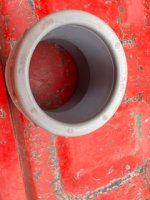AC\DC
Senior Member
- Location
- Florence,Oregon,Lane
- Occupation
- EC
maybe but why would orientation matter its sealing the hole correct?Shouldn't the washer be on the outside?
when you torque that nut down it pulls the ta tight and then that washer fills in voids. I don't see were it matters.
3v1 so I bet I am wrong



